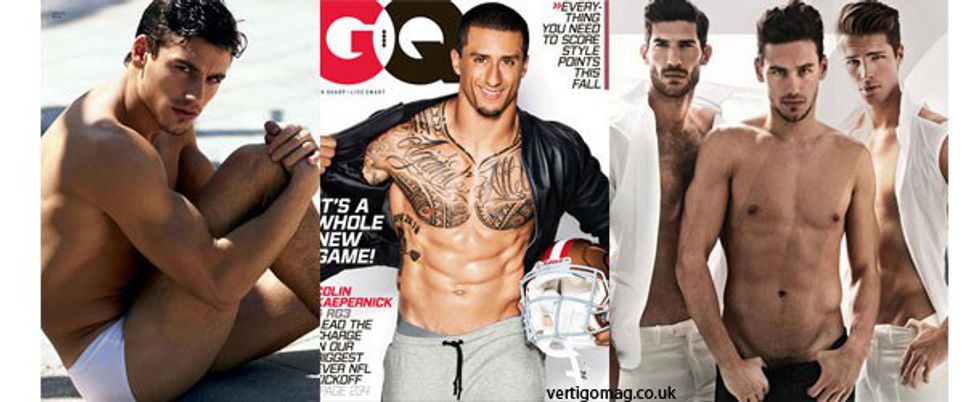Summer time is around the corner and that means the parade of shirtless men with Adonis-like physiques will be jocking it up soon. Women have reported high numbers in regards to negative body image for some time now, but more men are now admitting to body dissatisfaction. Those attitudes are growing at a much more rapid rate than women. I think the reasons are that there is a lack of diverse male archetypes in the U.S. print marketing media, which glorifies Hollywood male body standards has caused body anxiety in many males.
There is an increasing popularity in entertainment, media, and advertising in recent years to focus on the beauty of the “ideal” male form. A study from San Francisco State University found men face media pressure to be muscular. That study goes on to state that an American ideal male body type has a broad upper body, including shoulders, biceps, and pectoral muscles. “V-shaped” torso seems to be a key term Internationally. White celebrities from America (Chris Evans, Channing Tatum, Chris Pratt) were the most cited out of any country when discussing foreign influence on the male beauty ideal.
In American print media, the images of minority men in top selling magazines are decreasing and if there is a man of color on the front cover, it is often a male who has been repeatedly used. Minorities take up almost 40% of the American population and this demographic still growing. The representation of minorities and their portrayal in the media has somehow been lost in the translation.
Additionally, If you go to search for a plus sized male model in U.S. print media and marketing you may find a few, but the first plus sized male model that is signed to a major modeling agency is Zachary Miko.
There is truly psychology behind male body image that affects many men. Psychotherapist Larry Cappel and Michael Addis, Professor of psychology both agree that men, especially young boys, base self-esteem on body image and weight. Do to the set primary body standard of what the perfect male should be. This largely leads to health issues, depression, and Body dysmorphic disorder in many (which a person becomes obsessed with imaginary defects in their appearance).
This is evident as men’s beauty products increased by more than 70% worldwide between 2012 and 2014 and in U.S. market for men’s personal care products earned $4.1 billion in 2014 according to market research firm Mintel. According to The American Society for Aesthetic Plastic Surgery in a recent year there has been a dramatic 48 % increase in Plastic Surgery for men compared to the recent years previous. There is already a change in the print media culture with selecting more diverse models, but we need to encourage the media to continue. Let's not make this just a fad of the times. Models are held up as ideal images of human beauty, but when they model the clothes we wear, it can be hard to tell how we’d look in those clothes because the majority of us look nothing like those models.



















